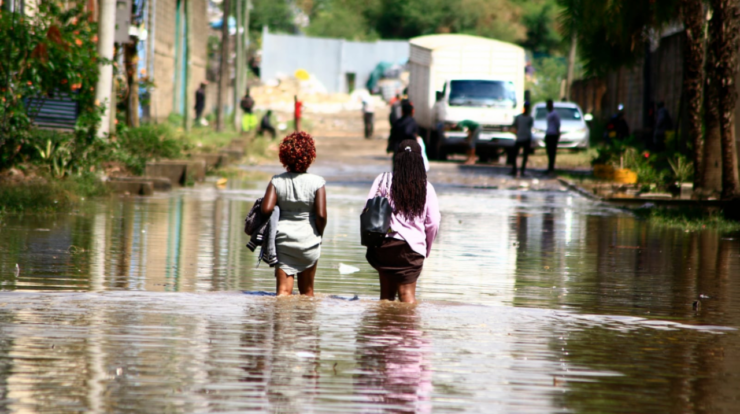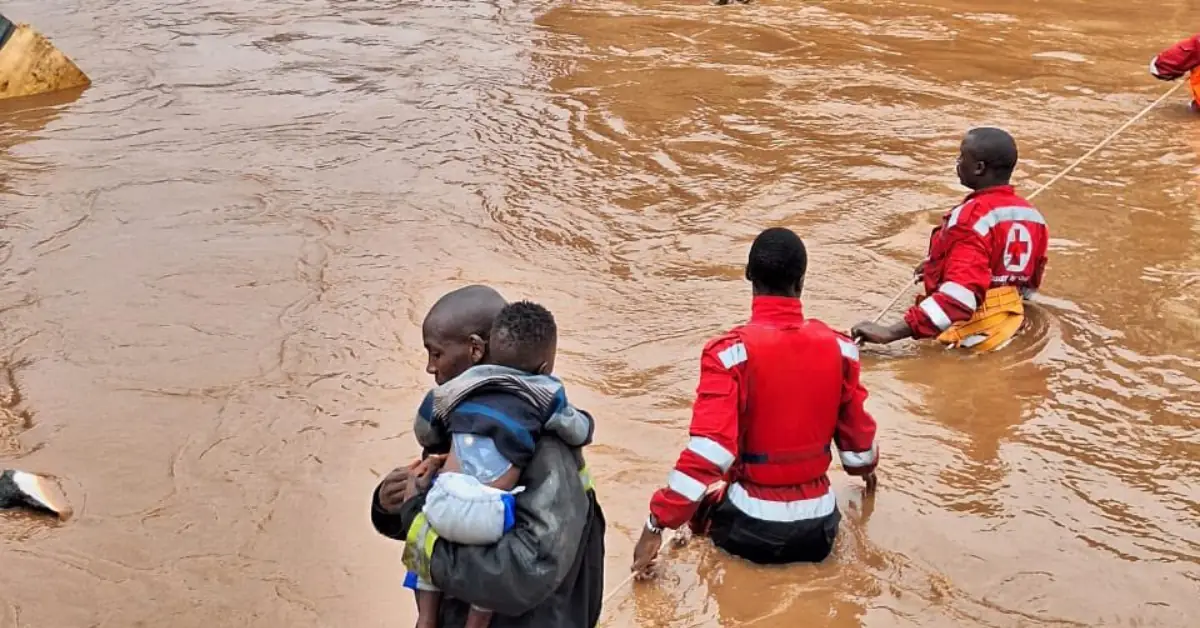
Kenya nairobi flooding – As Kenya’s capital city, Nairobi, faces the relentless onslaught of flooding, this article delves into the multifaceted causes, devastating impacts, and ongoing efforts to mitigate this persistent challenge.
Flooding has become an all-too-familiar sight in Nairobi, leaving behind a trail of destruction and displacement. The relentless downpours have inundated homes, crippled infrastructure, and disrupted livelihoods, posing a significant threat to the city’s well-being.
Impacts of Flooding in Nairobi

Flooding in Nairobi has caused significant damage to the city’s infrastructure, economy, and population. In 2022, heavy rains led to widespread flooding that affected over 200,000 people, destroying homes, businesses, and roads.
Infrastructure Damage
Flooding has damaged bridges, roads, and other infrastructure in Nairobi. In 2018, flooding washed away a section of the Thika Superhighway, disrupting traffic and causing significant economic losses.
Economic Impact
Flooding can also lead to business closures and job losses. In 2019, flooding in Nairobi forced many businesses to close temporarily, resulting in lost revenue and reduced economic activity.
Humanitarian Impact
Flooding can have a devastating impact on people’s lives. In 2021, flooding in Nairobi displaced over 100,000 people, many of whom lost their homes and belongings.
Causes of Flooding in Nairobi

Flooding in Nairobi is caused by a combination of factors, including heavy rainfall, inadequate drainage, deforestation, and urbanization.
Heavy Rainfall
Nairobi experiences heavy rainfall during the rainy season, which can lead to flooding if the drainage system is not able to handle the excess water.
Inadequate Drainage
Nairobi’s drainage system is inadequate and unable to handle the volume of water that flows into the city during heavy rains. This is due to a lack of investment in drainage infrastructure and poor maintenance.
Deforestation
Deforestation in the Nairobi area has reduced the amount of vegetation that can absorb rainwater, which has contributed to flooding.
Urbanization
Urbanization has increased the amount of impervious surfaces in Nairobi, which prevents water from being absorbed into the ground and leads to increased runoff.
Government Response to Flooding in Nairobi
The Kenyan government has taken a number of steps to address flooding in Nairobi, including implementing flood control projects and investing in drainage infrastructure.
Flood Control Projects
The government has implemented a number of flood control projects in Nairobi, including the construction of dams, levees, and floodwalls. These projects have helped to reduce flooding in some areas of the city.
Drainage Infrastructure, Kenya nairobi flooding
The government has also invested in drainage infrastructure in Nairobi. This includes the construction of new drains and the rehabilitation of existing ones. These projects have helped to improve the city’s drainage capacity.
Challenges
Despite these efforts, flooding remains a challenge in Nairobi. This is due to a number of factors, including the city’s rapid growth, the inadequacy of the drainage system, and the effects of climate change.
Community-Based Initiatives to Address Flooding
In addition to government efforts, there are a number of community-based initiatives that are working to address flooding in Nairobi.
Local Organizations
Local organizations are playing a key role in raising awareness about flooding and its impacts. They are also working to implement community-based flood control measures.
Flood Control Measures
Community-based flood control measures include the construction of small dams, levees, and floodwalls. These measures have helped to reduce flooding in some areas of the city.
Impact
Community-based initiatives have had a positive impact on reducing flooding in Nairobi. They have helped to raise awareness about the issue and have implemented effective flood control measures.
Long-Term Solutions to Flooding in Nairobi
There are a number of long-term solutions that can be implemented to address flooding in Nairobi. These include improving the drainage system, promoting sustainable urban planning, and implementing green infrastructure.
Drainage System
The government needs to invest in improving the drainage system in Nairobi. This includes increasing the capacity of existing drains and constructing new ones.
Sustainable Urban Planning
Sustainable urban planning can help to reduce flooding by promoting the use of green infrastructure and reducing the amount of impervious surfaces in the city.
Green Infrastructure
Green infrastructure, such as parks, green roofs, and permeable pavements, can help to absorb rainwater and reduce runoff. This can help to reduce flooding in the city.
Last Word
Addressing the issue of flooding in Nairobi requires a comprehensive and collaborative approach, involving both government agencies and community initiatives. By investing in sustainable urban planning, improving drainage systems, and promoting green infrastructure, the city can mitigate the impacts of flooding and create a more resilient urban environment for its residents.
FAQ Guide: Kenya Nairobi Flooding
What are the primary causes of flooding in Nairobi?
Nairobi’s flooding is primarily attributed to heavy rainfall, inadequate drainage systems, deforestation, and rapid urbanization.
How has flooding impacted Nairobi’s infrastructure and economy?
Flooding has damaged roads, bridges, and buildings, disrupting transportation and business activities. It has also led to loss of income and livelihoods, particularly for those living in informal settlements.
What measures has the government taken to address flooding?
The government has implemented flood control projects, such as constructing drainage channels and retention ponds. However, challenges remain in terms of maintenance and enforcement of building regulations.





